
Features
Environmental Control
Structures & Equipment
The right temperature
November 25, 2013 By Abida Nasreen Les Shipp and Gillian Ferguson
Mass production of beneficials is an extremely skilful process starting
with the establishment of a good stock colony to packaging and shipment
of the products.
Mass production of beneficials is an extremely skilful process starting with the establishment of a good stock colony to packaging and shipment of the products.
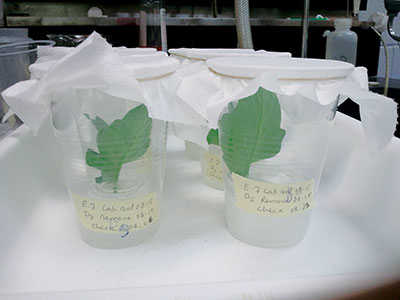 |
|
| Arena to test parasitism and longevity. Advertisement
|
After harvesting the beneficials, it can take one to two weeks for sorting, packing and shipping from the production facility to the consumers.
These procedures are usually completed under lower temperatures (0 to 12 C) to synchronize desired stages of development for release and facilitate availability to consumers.
Previous studies indicate that keeping insects under low temperatures can negatively affect their quality. Growers have also experienced variability in the emergence of parasitoids or dramatically reduced numbers of predators from what was promised by the supplier.
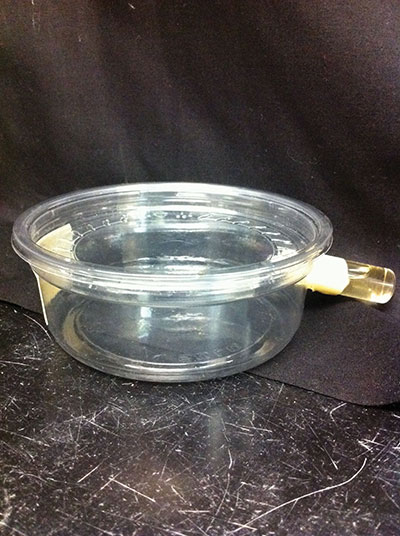 |
|
| Arena to check emergence and sex ratio
|
Fluctuations in the quantity and quality of these natural enemies can have a major impact on biological control programs being implemented and even result in pest outbreaks.
Keeping in mind the effects of low temperatures, a study was conducted at Agriculture and Agri-Food Harrow to determine how life fitness parameters such as emergence, sex ratio, fecundity, longevity, flight and parasitism rate for the whitefly parasitoids, Encarsia formosa and Eretmocerus eremicus, changed when the two parasitoids were stored at low temperatures.
The trials were conducted under laboratory conditions. Parasitoid pupae were exposed to five treatments:
- Supplier Control (control supl): tested immediately at 24 C upon receipt from supplier.
- Cold stored W1: cold stored at 7 C for one week.
- Cold stored W2: cold stored at 7 C for two weeks.
- Acclimatized: stored at 12 C for one week and cold stored at 7 C for one more week.
- AAFC Control (control lab): parasitoids were reared in the AAFC laboratory and used as fresh.
The parasitoid pupae received from the supplier, and used for treatments 1 to 4, were never stored and were shipped within 24 hours after harvesting the parasitized whitefly pupae.
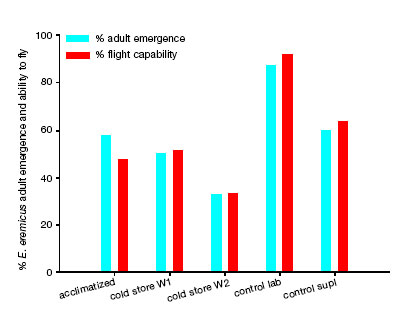 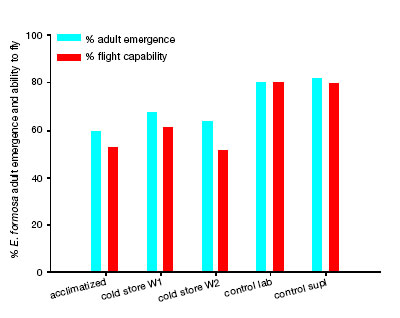 |
|
| Fig 1. Mean percentage emergence and flight capability (±SE) of E. eremicus and E. formosa exposed to five treatments.
|
Emergence and sex ratio were determined using the emergence arenas (at left), flight tests were performed using a flight chamber, and parasitism and longevity tests were conducted on tomato leaves in plastic arenas (above).
Results of these trials indicated that emergence rate of E. eremicus was greatest in the control lab treatment (87 per cent) followed by control supl (60 per cent), acclimatized (57 per cent), cold stored W1 (50 per cent), and cold stored W2 (33.0 per cent).
The emergence rate of E. formosa was more than 80 per cent in both control treatments, followed by cold stored W1 (67 per cent) and cold stored W2 (64 per cent), and acclimatized (57 per cent).
Cold storage decreased the flight capacity of both parasitoids by 20 to 50 per cent (Fig. 2). No significant effect of cold storage was observed on the sex ratio, that was 40:60 (male:female) for E. eremicus and 99 per cent females for E. formosa in all treatments.
Results also showed that E. eremicus adults parasitized the maximum number of whitefly scales during Days 2 to 5.
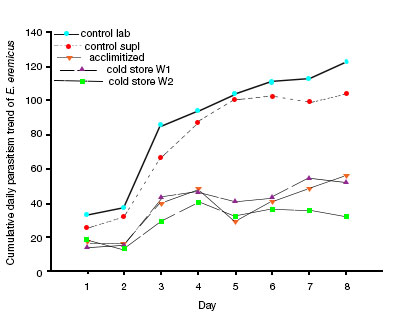 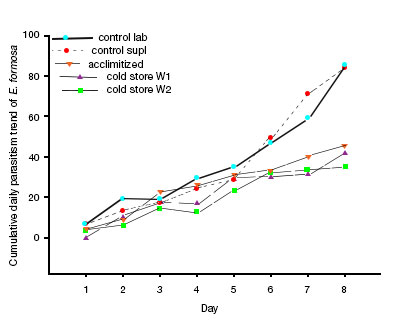 |
|
| Fig 2. Parisitism trends for E. eremicus and E. formosa from day 1 – 8 after exposure to different storage and control treatments. |
By contrast, E. formosa showed a continuous, but lower, daily trend in parasitizing whitefly scales up to Day 8. Mean numbers of whitefly scales parasitized by both species were reduced by ≥ 50 per cent under all cold storage treatments compared to the control treatments (Fig. 2).
Cold storage did not significantly affect longevity, with average longevity of both parasitoids being eight days on whitefly-infested leaves and three days on whitefly-free leaves.
In summary, storage of E. formosa and E. eremicus pupae at lower temperatures has significant adverse effects on important life fitness parameter like emergence, flight and parasitism.
Cumulative parasitism rate, which is important for effective biological control, is significantly affected even after one week of storage at lower temperatures.
Acclimation during cold storage reduced the negative effects of low temperature compared to continuous storage, but the quality of parasitoids was significantly lower than that of the control treatments.
This project was funded in part through Growing Forward, a federal-provincial-territorial initiative. The Agricultural Adaptation Council assists in the delivery of several Growing Forward programs in Ontario. OGVG levy was also utilized for this project.
ABOUT THE AUTHORS
- Abida Nasreen, Ontario Greenhouse Vegetable Growers (OGVG), Leamington, Ont., dranasreen@yahoo.ca.
- Les Shipp, Agriculture and Agri-Food Canada, Greenhouse and Processing Crop Research Centre, Harrow, Ont., shippL@agr.gc.ca.
- Gillian Ferguson, Ontario Ministry of Agriculture and Food and Ministry of Rural Affairs, Greenhouse and Processing Crops Research Centre, Harrow, Ont.; gillian.ferguson@ontario.ca
Print this page